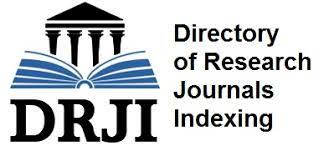The Relationship between Having Smartphone and Pocket Money to Obesity in Adolescents
DOI:
https://doi.org/10.62358/mgii.v1i2.16Keywords:
Obesity, Smartphone, Pocket MoneyAbstract
Technological advances have made lifestyle transformation. On teenagers, using smartphones and the pocket money that can affect of food intake. Based on the World Health Organization in 2018, adolescents in the world who are obese have increased tenfold in the last 40 years. Meanwhile, the prevalence of overweight (5-19 years) in 2016 reached 216 million children. The purpose of the study is to analyze the relationship between smartphone ownership and pocket money on the incidence of obesity in adolescents. This study was carried out at SMP Pembangunan Padang with a research population of class VII and VII students as many as 90 people and as many as 37 people as a research sample. This study uses a cross-sectional study approach. Samples were taken by random sampling where anthropometric data were processed using the WHO Anthro Plus application and the statistical analysis used was the chi square test with a confidence level of 95% (α = 0.05) and Odds Ratio (OR). The results of the chi square test showed that smartphone ownership was associated with obesity (p-value = 0.03) and OR 4.47, while pocket money was associated with obesity (p-value = 0.00) and OR 2.37. The conclusion of this study is that smartphone ownership and pocket money are associated with the incidence of obesity in adolescents.
References
Ditjen Kesmas Kemenkes RI. GERMAS (Gerakan Masyarakat Hidup Sehat). Warta Kesmas. 2017;1(1):27. Available: https://kesmas.kemkes.go.id/assets/uploads/contents/others/Warta-Kesmas-Edisi-01-2017_752.pdf. Diakses 27 Juli 2023.
Worldbank Indonesia. Menghadapi Beban Ganda Malnutrisi. 2012, Available: https://www.worldbank.org/in/news/feature/2015/04/23/the-double-burden-of-malnutrition-in-indonesia. Diakses 26 Juli 2023.
Jahari A. Penilaian Status Gizi Berdasarkan Antropometri. Bogor: Puslitbang Gizi dan Makanan; 2004.
Cassidy S, Chau JY, Catt M, Bauman A, Trenell MI. Low physical activity, high television viewing and poor sleep duration cluster in overweight and obese adults; a cross-sectional study of 398,984 participants from the UK Biobank. International Journal of Behavioral Nutrition and Physical Activity. 2017 Apr 28;14(1). DOI: 10.1186/s12966-017-0514-y.
World Health Organization. Global School-based Student Health Survey Results: 2015. 2015. Available from: www.searo.who.int . Diakses pada 26 Juli 2023.
Commission on Ending Childhood Obesity. New global estimates of child and adolescent obesity released on World Obesity Day. World Health Organization. 2017. ISBN: 9789241510066. Available:https://apps.who.int/iris/bitstream/handle/10665/204176/9789241510066_eng.pdf?sequence=1. Diakses 27 juli 2023.
Badan Penelitian dan Pengembangan Kesehatan Kementerian Kesehatan RI. Riset Kesehatan Dasar. Jakarta; 2013.
Kemenkes RI. HASIL UTAMA RISKESDAS 2018. 2018;
Dinas Kesehatan Kota Padang. Rekapitulasi Hasil Penjaringan Kesehatan Siswa SMP/MTs . Padang; 2014.
Dinas Kesehatan Kota Padang. Rekapitulasi Hasil Penjaringan Kesehatan Siswa SMP/MTs . Padang; 2015.
Dinas Kesehatan Kota Padang. Rekapitulasi Hasil Penjaringan Kesehatan Siswa SMP/MTs. Padang; 2016.
Widianto F, Mulyono S, Fitriyani P. Remaja Bisa Mencegah Gizi Lebih dengan Meningkatkan Self-Efficacy Dan Konsumsi Sayur-Buah. Indonesian Journal of Nursing Practices. 2017;1(2). DOI:10.18196/ijnp.1257.
Kenney EL, Gortmaker SL. United States Adolescents’ Television, Computer, Videogame, Smartphone, and Tablet Use: Associations with Sugary Drinks, Sleep, Physical Activity, and Obesity. 2017. DOI: http://dx.doi.org10.1016/j.jpeds.2016.11.015www.jpeds.com
Lepp A, Barkley JE, Sanders GJ, Rebold M, Gates P. The relationship between cell phone use, physical and sedentary activity, and cardiorespiratory fitness in a sample of U.S. college students. International Journal of Behavioral Nutrition and Physical Activity. 2013 Jun 21;10. DOI: 10.1186/1479-5868-10-79.
Desi, Suaebah, Astuti Winda Dwi. Hubungan Sarapan, Uang Saku Dengan Jajanan Di Sd Kristen Imma-Nuel II Kubu Raya. 2018. DOI:10.30602/jvk.v4i2.142.
Taufikkurrahman. Hubungan Penggunaan Smartphone Terhadap Tingkat Obesitas Dan Kebugaran Jasmani Siswa SPMN 1 Jombang Usia 13-15 Tahun. Jurnal Sporta Saintika. 2019;4(1). DOI: 10.24036/sporta.v4i1.98.
Nirwana Ade Benih. Obesitas anak dan pencegahannya. Yogyakarta: Nuha Medika; 2012.
Miao Li, Hong Xue, Peng Jia, Yaling Zhao, Zhiyong Wang, Fei Xu. Pocket money, eating behaviors, and weight status among Chinese children: The Childhood Obesity Study in China mega-cities. Preventive Medicine V. 2017;100. DOI: 10.1016/j.ypmed.2017.04.03.
Rosyidah Z, Ririn Andrias D, Gizi Kesehatan Fakultas Kesehatan. Jumlah Uang Saku dan Kebiasaan Melewatkan Sarapan Berhubungan dengan Status Gizi Lebih Anak Sekolah Dasar. Media Gizi Indonesia. 2015;10(1). DOI : https://doi.org/10.20473/mgi.v10i1.1-6.
Monetta RV. Hubungan Asupan Tinggi Energi dan Uang Saku dengan Kejadian Obesitas Pada Mahasiswa/I Fakultas Kedokteran Universitas Tarumanagara. [Jakarta]: Universitas Tarumanegara; 2021. Available : http://repository.untar.ac.id/29014/. Diakses 26 Juli 2023.
Position Paper. Addressing Nutritional Disorders in Adolescents. Vol. 63, Journal of Adolescent Health. Elsevier USA; 2018. p. 120–3. DOI: https://doi.org/10.1016/j/jadohealth.2018.05.010.
Downloads
Published
Issue
Section
License
Copyright (c) 2023 Samnil Astuti Fitri, Riska Rusydi

This work is licensed under a Creative Commons Attribution-NonCommercial-ShareAlike 4.0 International License.
This work is licensed under CC BY-NC-SA 4.0
- Author is the copyright owner of all materials published on this website.
- The formal legal provisions for access to digital articles of this electronic journal are subject to the terms of the Creative Commons Attribution-NonCommercial-ShareAlike license (CC BY-NC-SA 4.0), which means that MEDIA GIZI ILMIAH INDONESIA journal and readers reserve the right to save, transmit media / format, manage in database, maintain, and publish articles as long as it continues to include the name of the Author.
- Published electronic manuscripts are open access for educational, research and library purposes. In addition to these objectives, the editorial board shall not be liable for violations of copyright law.





















